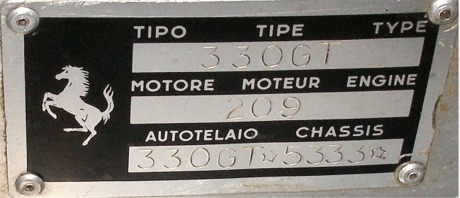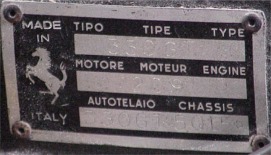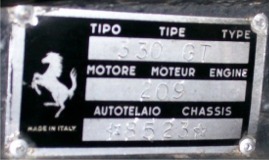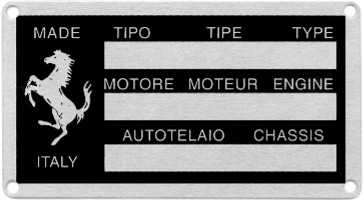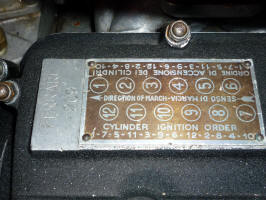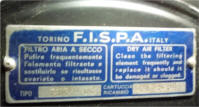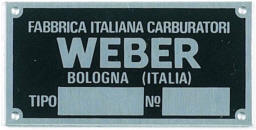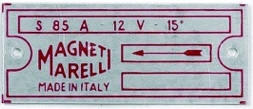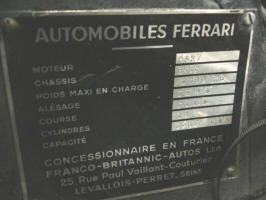 |
330 GT Registry |
 |
Identification Plates and Bands
There are a number of plates and bands on various parts of a 330 GT. Of course, nothing is for sure in this area and I welcome more information.
| Original | Reproduction | |
Under the hood, there is the serial number plate, usually found pop riveted to the right hand side of the hood latch. This has the type of car, "330 GT" for all cars in this registry. The motor type is also 209 for all 330 GT cars. The last item is the most important. That is the chassis serial number surrounded by stars. Sometimes, '330GT' is stamped before the serial number. On cars with A/C, the serial number plate is located on the sheet metal near the right front shock. Four types were used by Ferrari during the 330 America and GT production. Type 1 was used on the Americas and early (<~6400) 330 GTs. Type 2 was intermixed with the type 1 in the early 330 GTs. Type 3 was used from ~6400 through to the end. Type 4 was intermixed with type 3 from ~8500 to ~9100. |
|
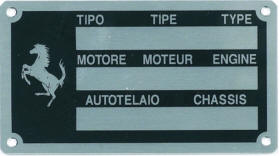 Type 1 GTO Engineering
|
The left cam cover has a plate on it that shows the firing order along with the cylinder numbering scheme. Note, the FERRARI 209 area should be as shown, i.e. not wrinkle painted. |
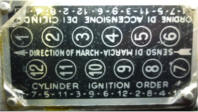 Kilimanjaro Designs |
|
| The overdrive unit (four speed models) has a plate on the left side. |
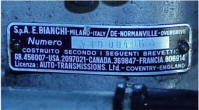 |
|
The air cleaner top has a metal plate that specifies the type of FISPA filters to be used inside. The early models with the open sided air cleaners use the curved plate. The later models with the air cleaner with intake tubes use the rectangular plate. |
  Kilimanjaro Designs |
|
| The FISPA fuel filter by the tank has a plate on the top. |
|
 Kilimanjaro Designs |
|
The 40 DCZ/6 carburetors each have a serial number and type plate on them. The 40 DFI and 40 DFI 2 carburetors do not have plates. |
Kilimanjaro Designs |
|
|
Each fuse block covers have a plate that describes what each fuse controls. The most cars through ~8275 used 12 fuses while from 8279 on had 16 fuses. Some interim cars and early 2HL (before 8279) had an extra 2 fuse block (14 fuses) for the electric windows. The cover for that block did not have a plate on it. |
 Kilimanjaro Designs |
|
|
The air conditioner (if so equipped) has a plate on it. And yes, this York compressor from Borg-Warner is the original that Ferrari put on for the factory air conditioning. |
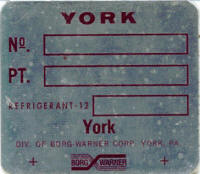 Kilimanjaro Designs |
|
|
The brake master cylinder has a metal band around it. This master cylinder dates from Oct. 20, 1964. |
N/A | |
|
Here is another master cylinder with a plastic band around it. The band has VB 80025 on it along with a Sep. 9, 1965 manufacture date. |
||
|
The steering box has a serial number plate on it. |
 Kilimanjaro Designs |
|
|
Each distributor has a plate on it. |
Kilimanjaro Designs |
|
|
This A/C hose has a band on it. Each hose's band has its Borletti part number stamped on it. 080.4231.006 - condenser to dryer |
N/A | |
|
Most 330 GTs came with FIAMM horn sets. The compressor has an aluminum plate. |
||
|
Each horn has an aluminum plate on the top. |
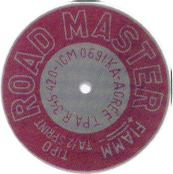 Kilimanjaro Designs |
|
|
330 GTs sold new in France would have had a plate installed by the French importer, Franco-Britannic-Autos. This one is installed on the rear of the sheet metal covering the left front shock in the engine compartment. |
N/A | |
| Abarth exhaust had a welded on plate with the IGM number assigned in the homologation paperwork. |
|
N/A |
